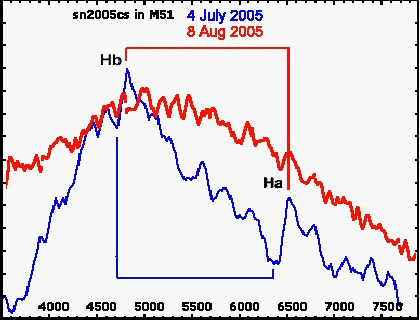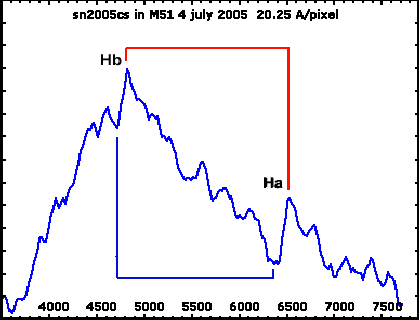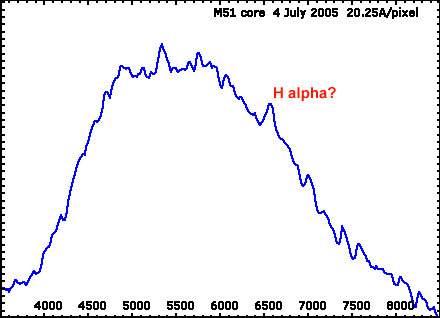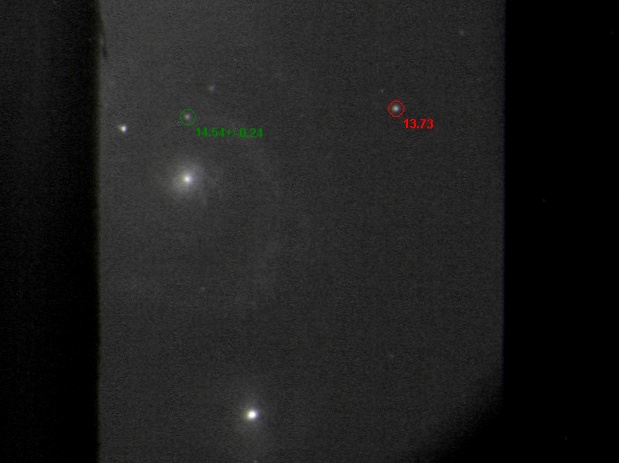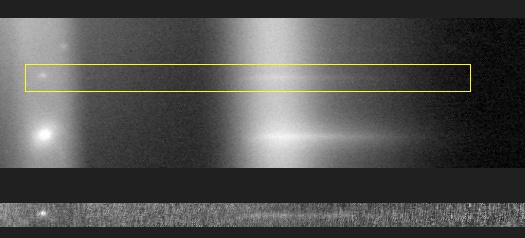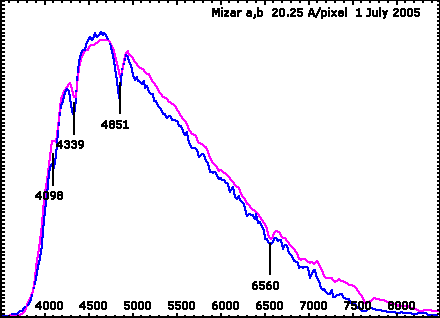|
Supernova sn2005cs in M51 8th Aug 2005 |
||
|
|
A third spectrum of this supernova captured 42 days after discovery at mag +14.5. This exposure is 180x 30sec taken around midnight UT in dark skies. The image was taken at prime focus, using the Star Analyser diffraction grating without a slit. |
|
|
|
The graph of the spectrum has been overlaid on the results from 4th July. The previously clear H lines are almost lost in the noise. It is not certain if this represents a real change or if it is due to increased background interference because of the lack of slit. |
|

